Abstract
Five younger (18 to 23 yrs) and five older (65 to 73 yrs) men were exposed to a series of immediate and delayed (0 to 15 seconds) matching-to-sample problems. Presentation of the pairs of delayed comparison stimuli was either signaled or unsignaled, and the sample contained either 1, 2, or 3 elements, one of which appeared as the positive stimulus. During initial sessions, unlimited time was available to respond. Subsequently, correct responses were reinforced only if they occurred within a specified time limit. A general finding was slower responding with increased delay and with increased number of sample elements. These effects were reduced when the comparison stimuli were signaled and when time limits were in effect. Errors increased as a function of the manipulations of sample complexity and time limits, but did not change systematically when the delay between sample and comparison stimuli was varied. Although the younger men generally responded more quickly than the older ones, men of both ages showed increased speeds when limits were placed on response time, and these changes were maintained when the temporal contingencies were removed.
Full text
PDF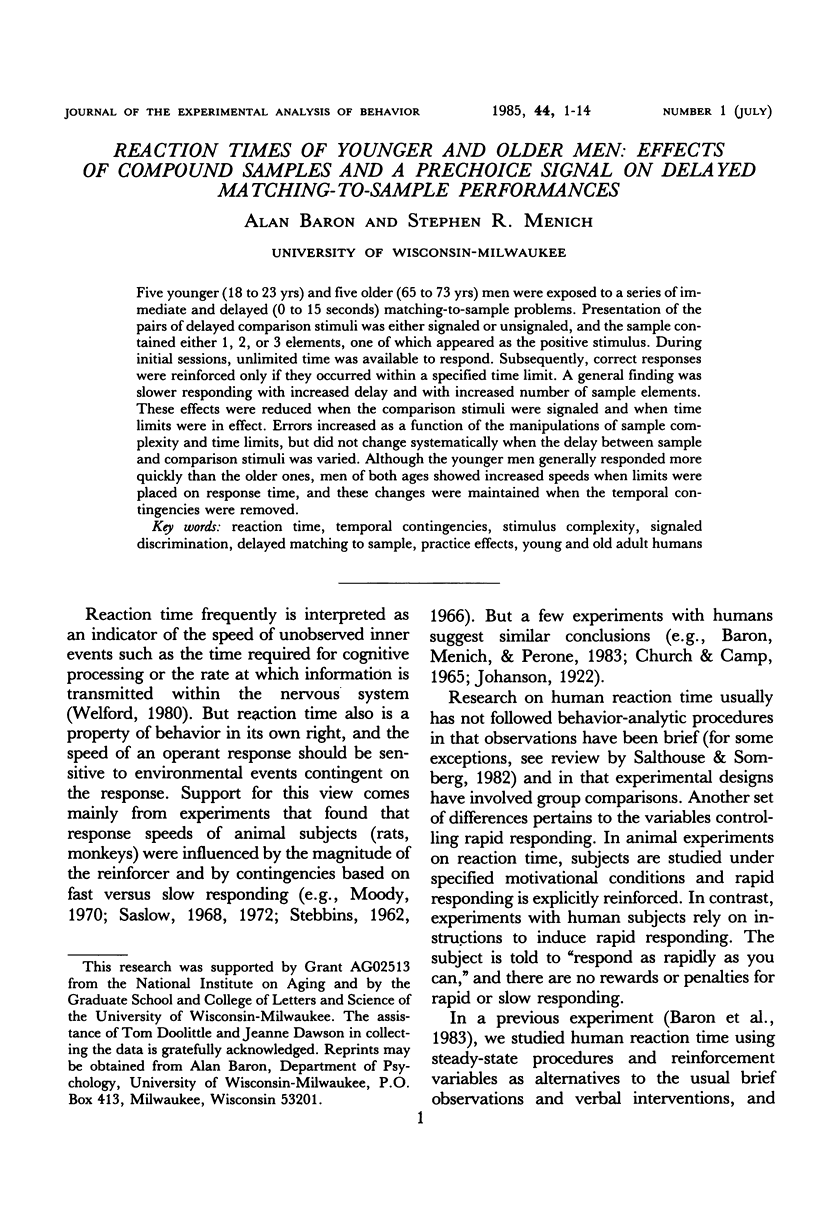


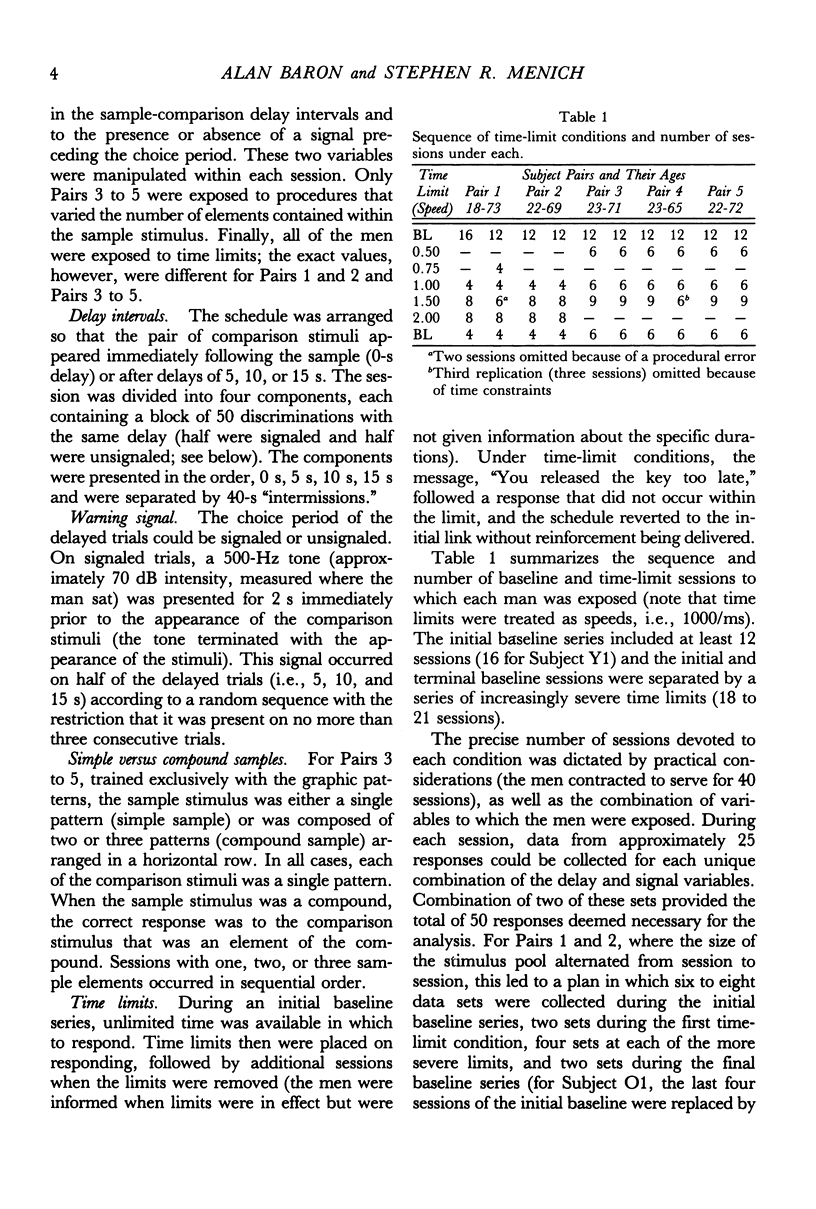
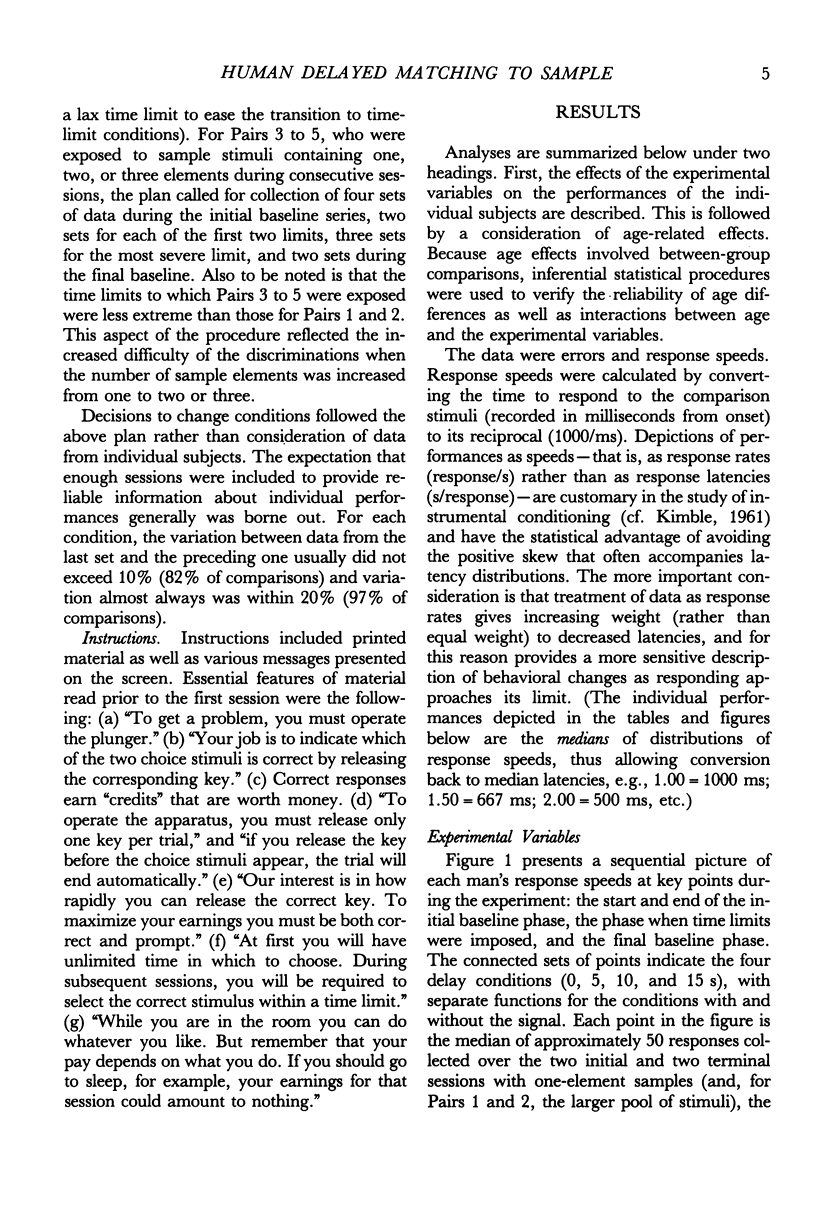
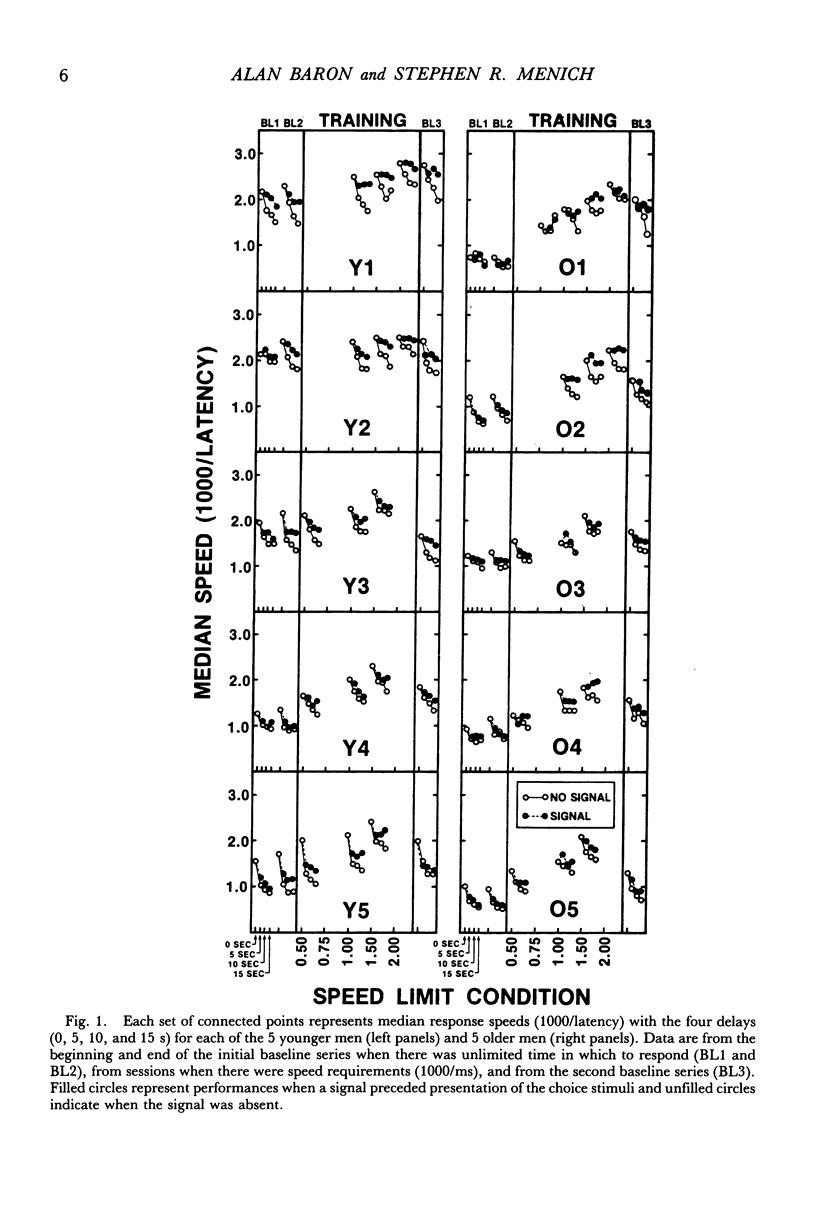
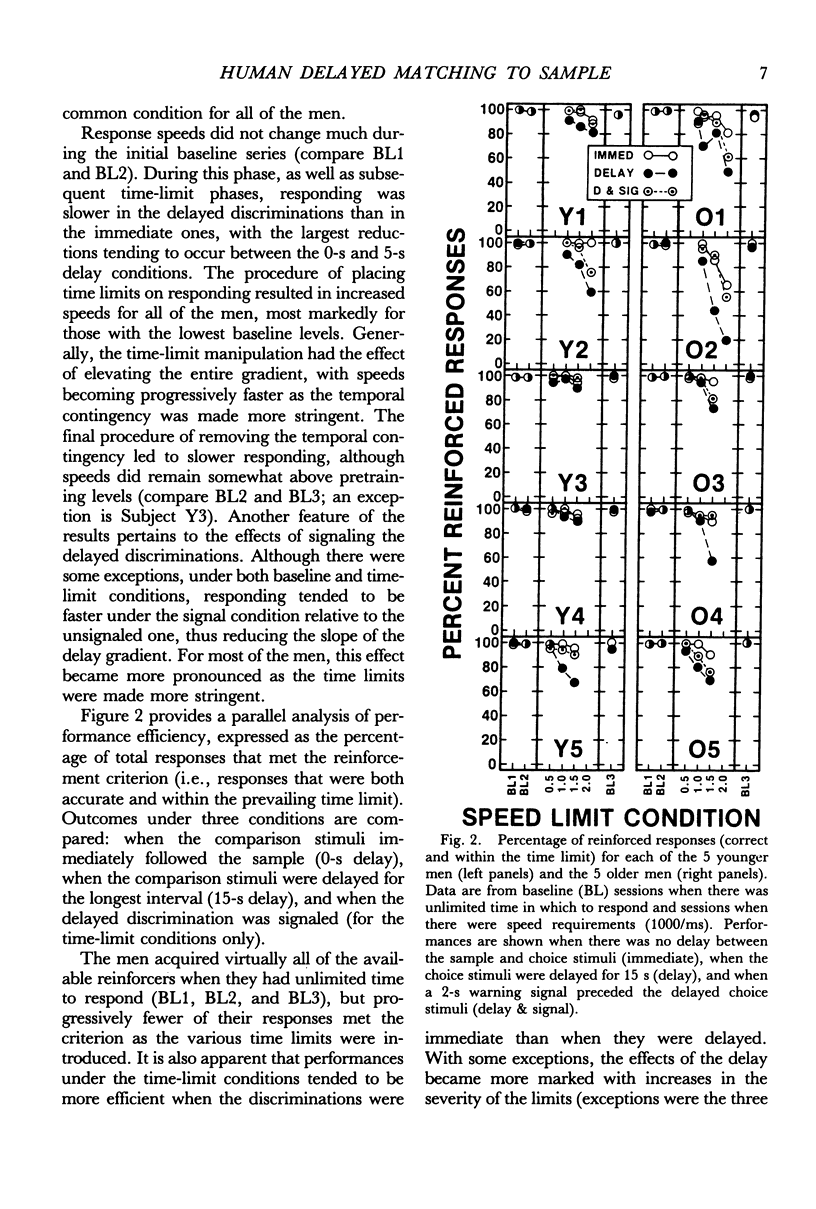

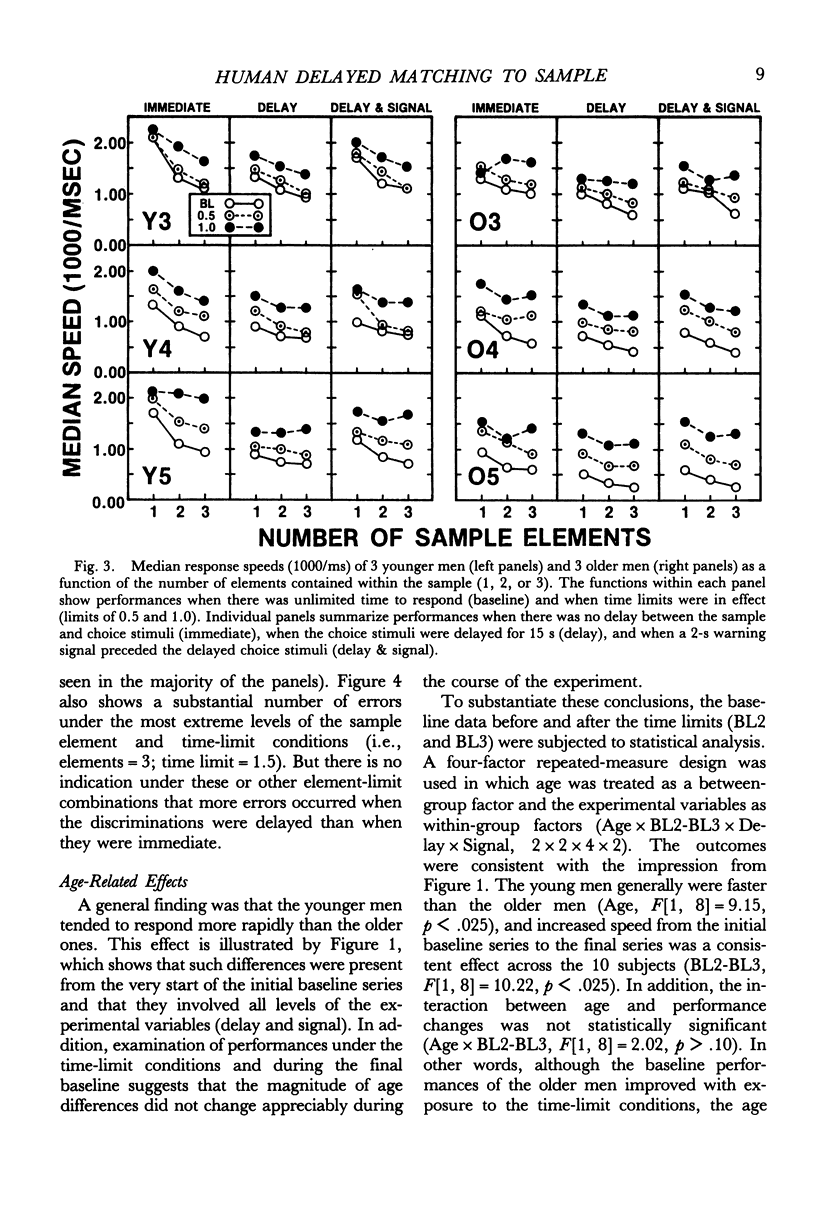
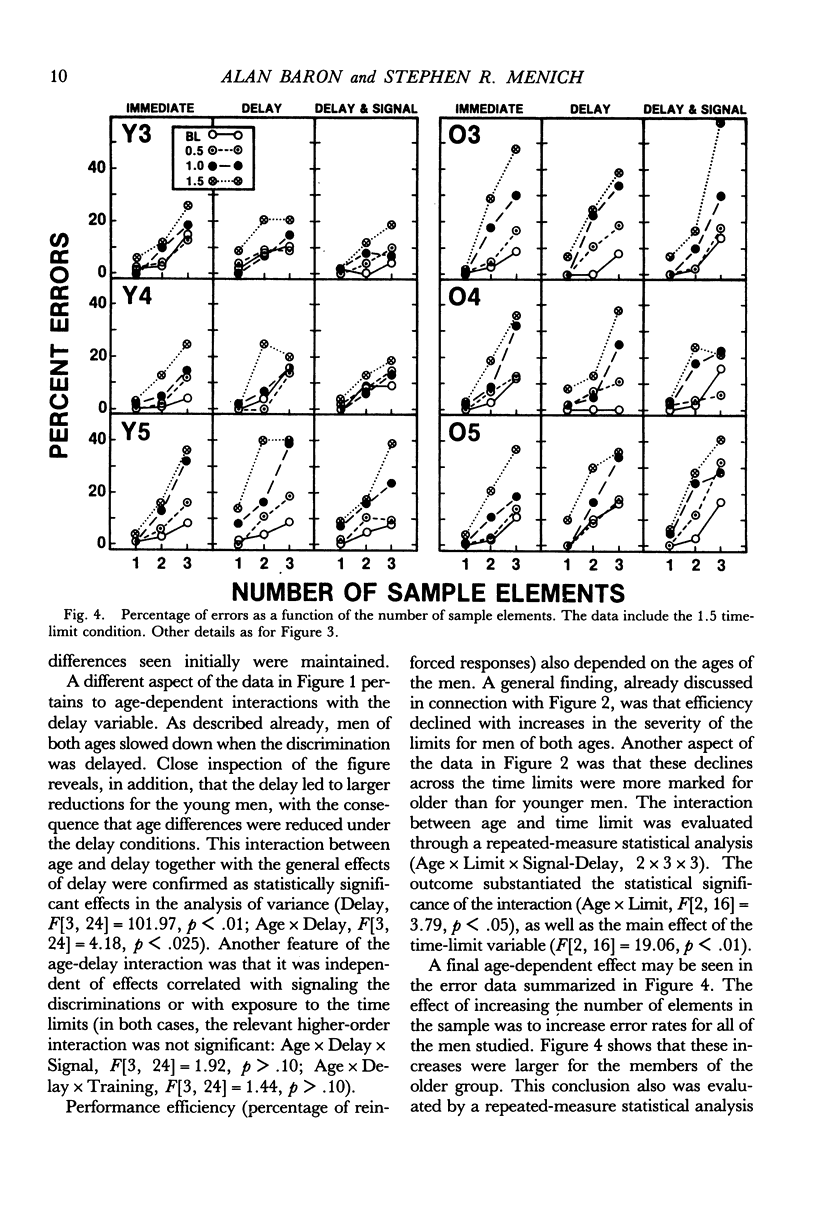
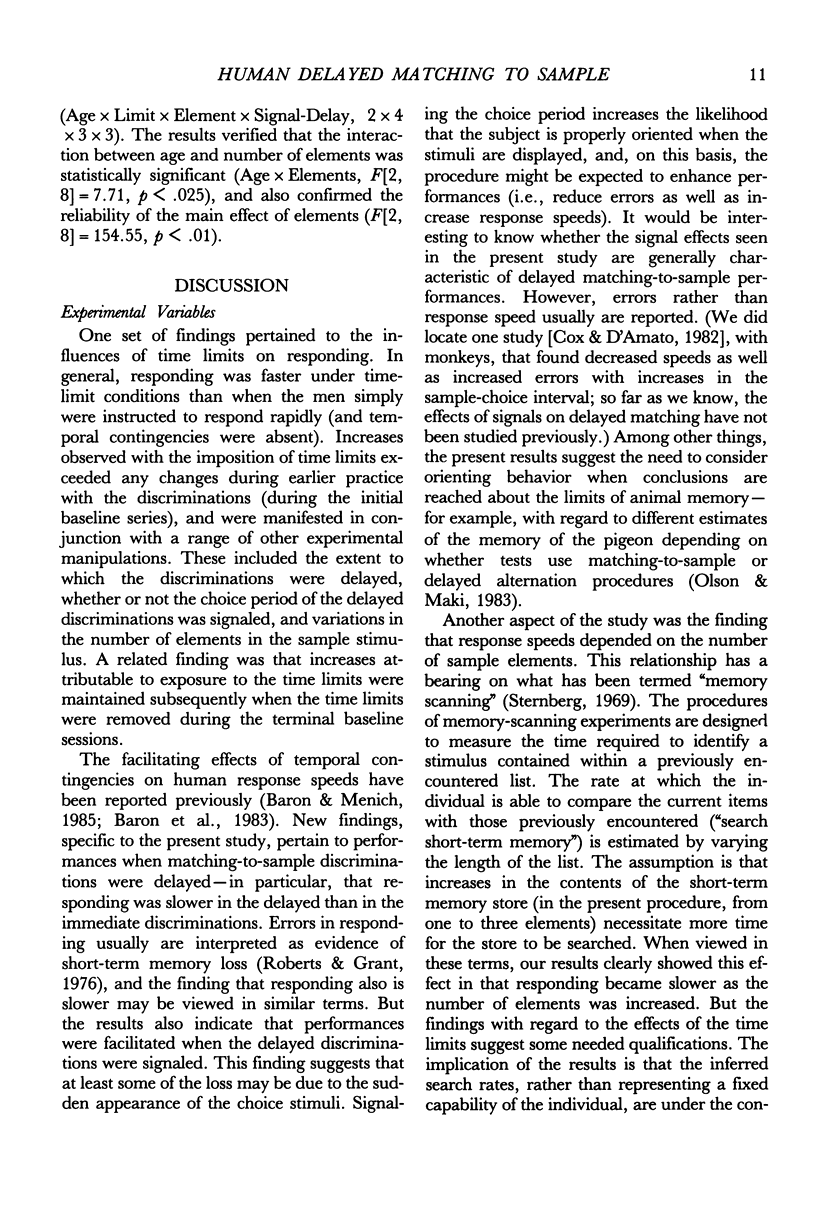

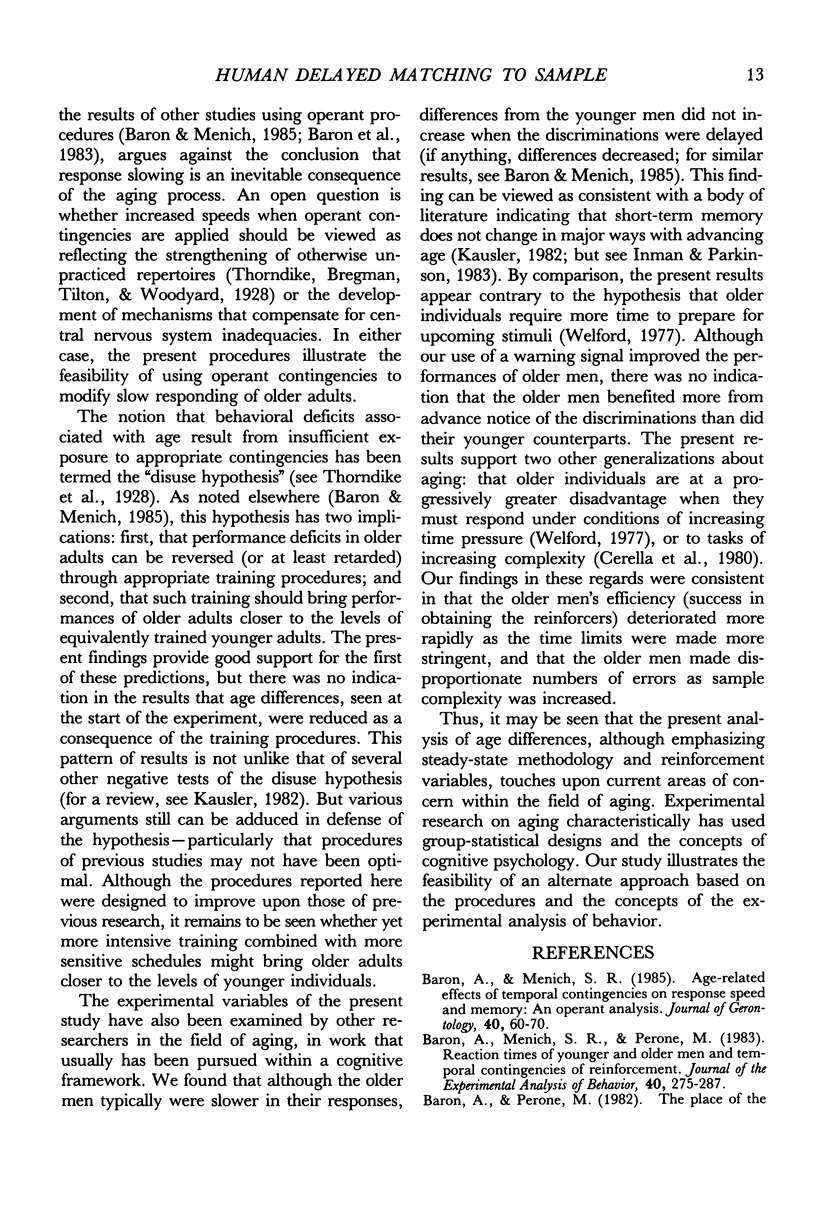
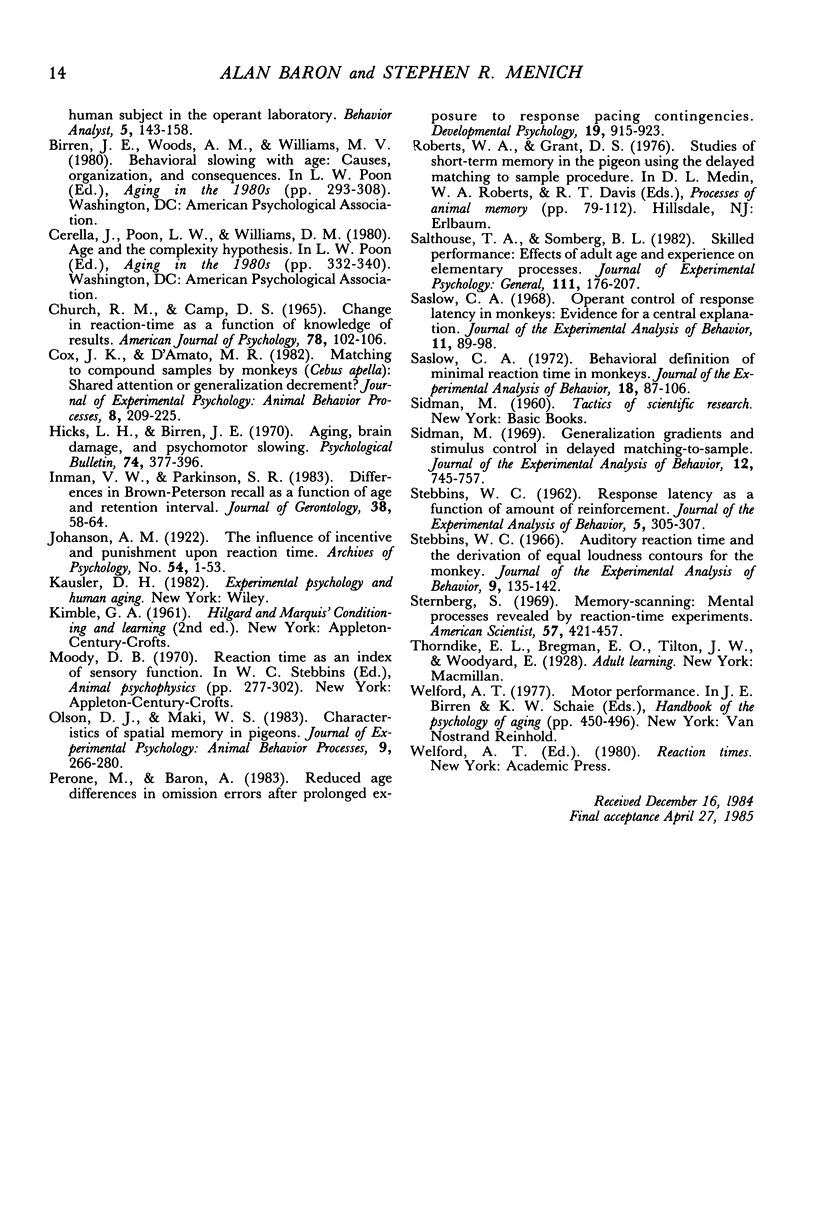
Selected References
These references are in PubMed. This may not be the complete list of references from this article.
- Baron A., Menich S. R. Age-related effects of temporal contingencies on response speed and memory: an operant analysis. J Gerontol. 1985 Jan;40(1):60–70. doi: 10.1093/geronj/40.1.60. [DOI] [PubMed] [Google Scholar]
- Baron A., Menich S. R., Perone M. Reaction times of younger and older men and temporal contingencies of reinforcement. J Exp Anal Behav. 1983 Nov;40(3):275–287. doi: 10.1901/jeab.1983.40-275. [DOI] [PMC free article] [PubMed] [Google Scholar]
- CHURCH R. M., CAMP D. S. CHANGE IN REACTION-TIME AS A FUNCTION OF KNOWLEDGE OF RESULTS. Am J Psychol. 1965 Mar;78:102–106. [PubMed] [Google Scholar]
- Hicks L. H., Birren J. E. Aging, brain damage, and psychomotor slowing. Psychol Bull. 1970 Dec;74(6):377–396. doi: 10.1037/h0033064. [DOI] [PubMed] [Google Scholar]
- Inman V. W., Parkinson S. R. Differences in Brown-Peterson recall as function of age and retention interval. J Gerontol. 1983 Jan;38(1):58–64. doi: 10.1093/geronj/38.1.58. [DOI] [PubMed] [Google Scholar]
- Olson D. J., Maki W. S. Characteristics of spatial memory in pigeons. J Exp Psychol Anim Behav Process. 1983 Jul;9(3):266–280. [PubMed] [Google Scholar]
- STEBBINS W. C. Response latency as a function of amount of reinforcement. J Exp Anal Behav. 1962 Jul;5:305–307. doi: 10.1901/jeab.1962.5-305. [DOI] [PMC free article] [PubMed] [Google Scholar]
- Saslow C. A. Behavioral definition of minimal reaction time in monkeys. J Exp Anal Behav. 1972 Jul;18(1):87–106. doi: 10.1901/jeab.1972.18-87. [DOI] [PMC free article] [PubMed] [Google Scholar]
- Saslow C. A. Operant control of response latency in monkeys: evidence for a central explantation. J Exp Anal Behav. 1968 Mar;11(2):89–98. doi: 10.1901/jeab.1968.11-89. [DOI] [PMC free article] [PubMed] [Google Scholar]
- Sidman M. Generalization gradients and stimulus control in delayed matching-to-sample. J Exp Anal Behav. 1969 Sep;12(5):745–757. doi: 10.1901/jeab.1969.12-745. [DOI] [PMC free article] [PubMed] [Google Scholar]
- Stebbins W. C. Auditory reaction time and the derivation of equal loudness contours for the monkey. J Exp Anal Behav. 1966 Mar;9(2):135–142. doi: 10.1901/jeab.1966.9-135. [DOI] [PMC free article] [PubMed] [Google Scholar]
- Sternberg S. Memory-scanning: mental processes revealed by reaction-time experiments. Am Sci. 1969 Winter;57(4):421–457. [PubMed] [Google Scholar]


